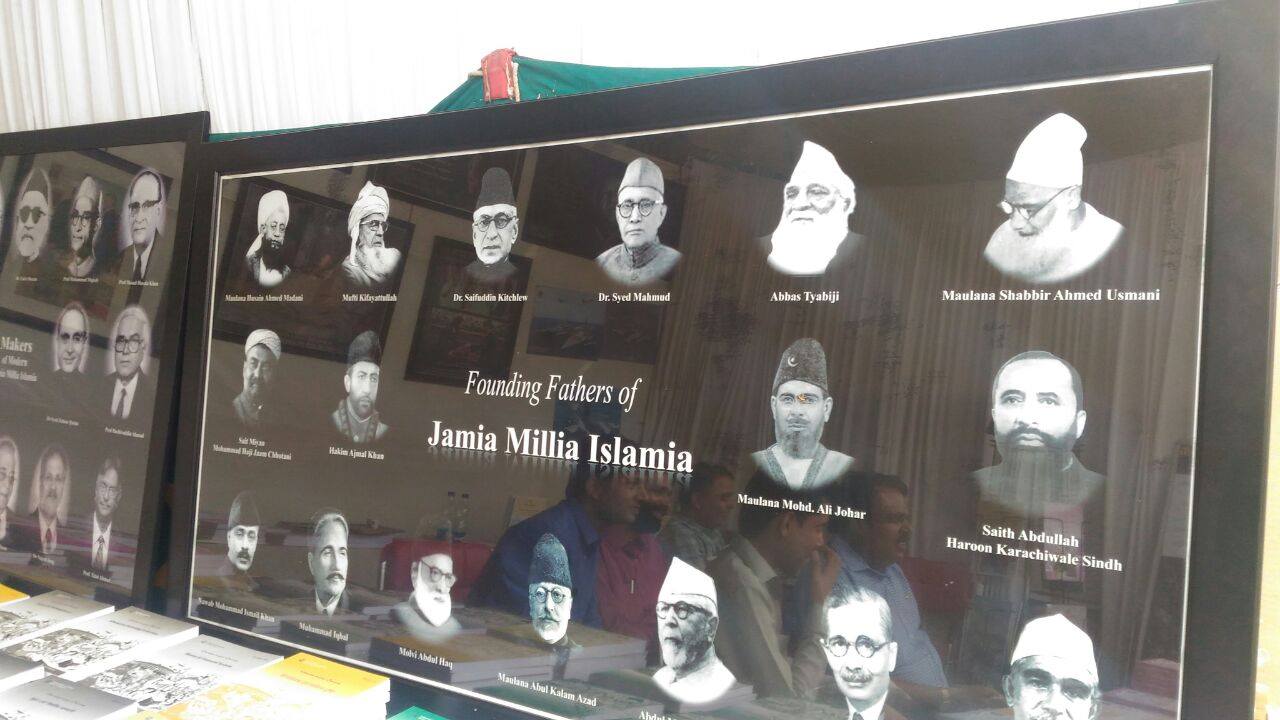5 years after returning to India for good, Mohandas Karamchand Gandhi had acquired fairly the next amongst college students who have been struck by his message preaching brotherhood between themselves and non-cooperation in direction of the colonial rulers. Pattern this: On October 12, 1920, when Gandhi visited the Muhammadan Anglo-Oriental (MAO) School in Aligarh, he requested the scholars gathered, “How will you stay, even for an hour, in an establishment through which you’re obliged to place up with the Union Jack and profess your loyalty to a Governor or different high-ranking officers, when, in reality you, aren’t loyal?”
Moved, a gaggle of scholars, school members and activists together with Mohammad Ali Jauhar and Shaukat Ali — additionally known as the Ali brothers — joined the Non-Cooperation Motion throughout the fortnight. Even earlier than the month was up, the group had established the Unbiased Nationwide College with an purpose to have an indigenous schooling free from British affect. It was renamed Jamia Millia Islamia (JMI), and shifted from Aligarh to New Delhi quickly after. Jauhar grew to become its first vice-chancellor, and Hakim Ajmal Khan its first chancellor. Outstanding educationalist Zakir Husain, who went on to change into India’s third President, was related to the college from the beginning.
On October 29, 2020, JMI turns 100, and from momentary quarters in an ashram to working out of a set of tents for 4 years, the tutorial establishment right this moment has 5 colleges with 9 distinct schools, 39 departments and 30 centres (unfold throughout Nanoscience, Dalit and Minorities Research, Peace and Battle Decision, and even Info Know-how) that educate over 21,000 college students of assorted non secular, caste, and sophistication affiliations. The primary batch that graduated in 1921 comprised 21 college students — all male. Final yr, practically 2,000 college students graduated from JMI; at the very least 35% of them ladies.
Its alumni span throughout fields from movie, politics and science, to journalism and civil companies, and embody former Chief Election Commissioner SY Qureshi, filmmaker Kiran Rao, and cricketer Virendra Sehwag, amongst others. Even actor Shah Rukh Khan was enrolled on the college’s well-known AJK Mass Communication Analysis Centre (AJK-MCRC).
Loveleen Tandon, co-director of Oscar-winning movie Slumdog Millionaire, known as Jamia a “birthplace of self-discovery”. “In our canteen, you’ll see folks sitting discussing politics, movies and talking about folks like (Andrei) Tarkovsky and (Ingmar) Bergman. Being in such an institute opened up a brand new world for me,” mentioned Tandon who studied at AJK-MCRC in 1998.
Former lieutenant governor of Delhi and Jamia vice-chancellor between 2009 and 2013, Najeeb Jung, mentioned: “Jamia is not only a college. It’s a motion began again in 1920 with an purpose to supply first-rate fashionable schooling. Right here fashionable means secular and nationalist schooling with the all-round improvement of scholars.”
Indigenous establishment
The year 1920 was an eventful one. Gandhi gave a name to boycott government-run colleges and faculties and the Congress handed a decision of Non-cooperation advising “the gradual withdrawal of kids from colleges or faculties… managed by authorities and… the institution of nationwide colleges and faculties within the varied provinces”. In response, various establishments got here up such because the Gujarat Vidyapith, Bihar Vidyapith, Kashi Vidyapith, and Fashionable College in Delhi, apart from JMI.
“Jamia, which implies a college in Arabic, was born out of Gandhi-ji’s name,” mentioned Sabiha Zaidi, director of Jamia’s Premchand Archives and Literary Heart, which has a set of photographs, personal papers and mementos relationship again to its begin.
The brand new college aimed to be “nationalist” and “indigenous”, Gandhi’s private secretary Mahadev Desai recorded in his journal on the time. By 1924, nevertheless, it had practically run out of cash. “Mohammad Ali had even instructed closing down Jamia however Gandhi-ji was completely towards it. He mentioned, ‘Jamia has to run. In case you are nervous about its funds, I’ll go about with a begging bowl’,” Zaidi mentioned.
A yr later, the college shifted to Karol Bagh in New Delhi. Outstanding industrialists sustained it — GD Birla, contributed Rs 50,000; Jamnalal Bajaj, raised Rs 6,000 for a brand new constructing — at Gandhi’s behest.
In 1938, Jamia established the Ustadon ka Madarsa, which got here to be known as the Lecturers’ Coaching School at Karol Bagh, and the Idara-e-Talim-o-Taraqqi that would supply night courses for grownup schooling. “Every time we discuss in regards to the schooling of Unbiased India, and extra particularly instructor’s schooling in India, Jamia’s contribution in making ready lecturers for an schooling system free from the British affect can’t be burdened sufficient,” mentioned Aejaz Masih, head of the school of schooling on the college.
“We had no boundaries when it got here to studying in Jamia. Although I used to be an engineering scholar, I acquired the chance to be taught French and skim the poetry of Rumi and Tabrez,” mentioned Hanif Quraishi, secretary, Renewable Power division, Haryana.
Shohini Ghosh, officiating director at AJK-MCRC mentioned this was one of many earliest centres for the manufacturing of academic movies for the College Grants Fee. “Many people began our careers as producers of those documentaries whose topic ranged from a portrait of Shahjahanabad to the workings of the Railways. Amar Kanwar, who’s now a well known documentary filmmaker and artist, made an award-winning collection on the leather-based trade. Other than this, AJK-MCRC inspired us to make impartial documentaries that affirmed social justice and questioned discriminatory practices,” she mentioned.
2019 political protest
On December 15, 2019, policemen entered JMI’s central library in an effort to quell the scholars and residents’ protests towards the Citizenship (Modification) Act. The Delhi Police used sticks and fired tear gasoline shells. Civil society activists and opposition events condemned the violence and demanded a judicial probe. A Nationwide Human Rights Fee report launched in June acknowledged that the police was “legislation certain to comprise the actions of the illegal meeting.”
Many Jamia college students who have been part of the protest, together with Meeran Haider and Safoora Zargar, have been arrested and charged by Delhi Police. Vice-chancellor Najma Akhtar mentioned that the First Info Report primarily based on a criticism made by the institute is but to be filed.
“Jamia believes in Gandhiji’s precept of non-violence. We’ve got restored the library utterly and even modified the color of the chairs with a hope that it doesn’t remind my college students of the violence after they return again to the campus,” mentioned Akhtar.
The scholar-led protest outdoors the college was suspended after the Covid-19 pandemic hit in March. The matter is presently earlier than the Delhi excessive court docket.



















